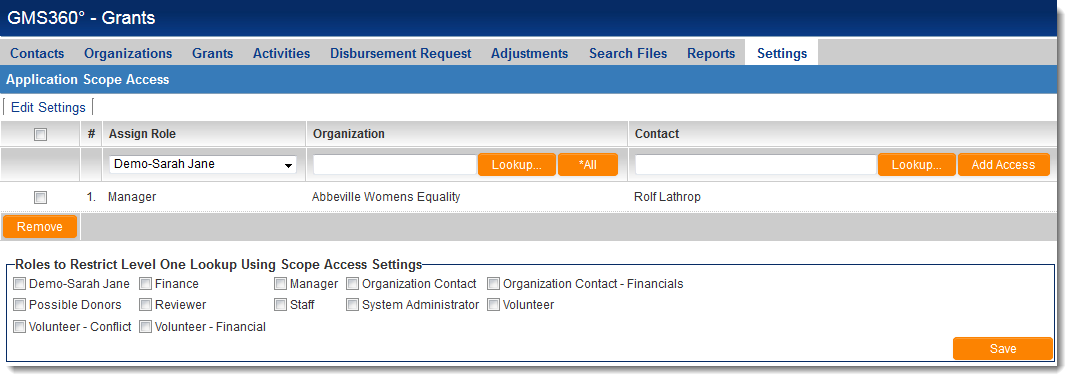Application Scope Access
The UTA Application Scope Access feature on the Settings page of all UTAs allows you to assign a designated role to a user if branch or company of a Level 1 instance is in the list. In other words, you can define implicit permission for a given user to UTA objects without them being explicitly indicated on a record. It also lets you associate the permissions of an individual to those of a particular company.
Impact: A user can now see the Level 1 items of a company based on the matrix permissions of the selected role.
In the example below, "Rolf Lathrop" can see all of the Level 1 items belonging to "Abbeville Womens Equality." When he looks at the Security Matrix items he will be restricted by the Security Matrix permissions of the "Manager" role.
These permissions mean that the user does not have to be directly attached to the Level 1 item. They do not have to be the owner, assigned or in an associated company in order to see the items.
Enabling Application Scope Access
- On the Security tab of the UTA Settings Page, select "Enable Application Scope Access."
- Scroll to the bottom of the page and hit "Save".
- Now navigate to the Settings tab of the UTA Settings Page.
- In the first section of the page, click the hyperlink for "Application Scope Access".
Restricted Roles
When using Application Scope Access - the Lookup for selecting an external company can be restricted by selecting roles in the Roles to Restrict Level One Lookup Using Scope Access Settings. You can select the roles to use to access scope settings for what to display in the lookup box for level one items. This only applies to the level one standard field lookup (ie. Company), UTA Contacts tab lookup, and UTA Companies tab lookup.
Impact: When enabled, a user that clicks the Lookup button will only see the companies that they are associated with in the Application Scope Access list where they are in the role that has been selected in the role box.
